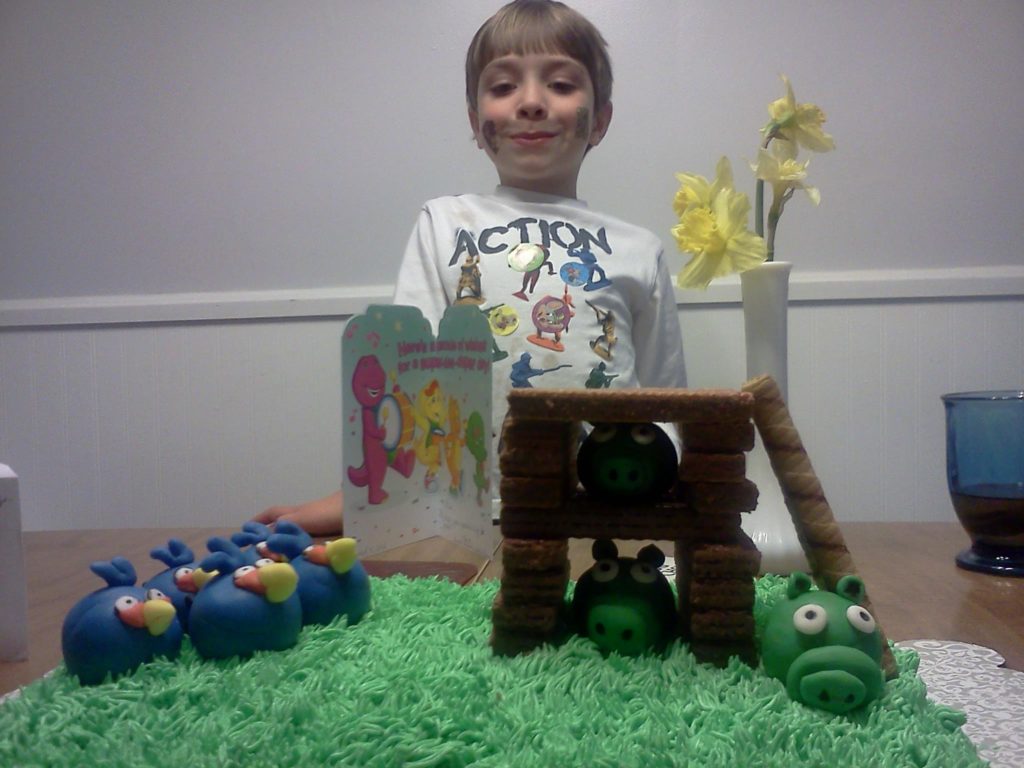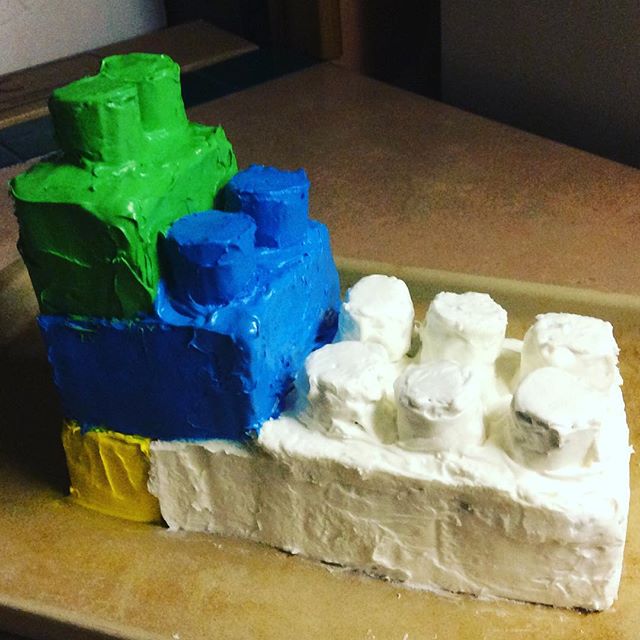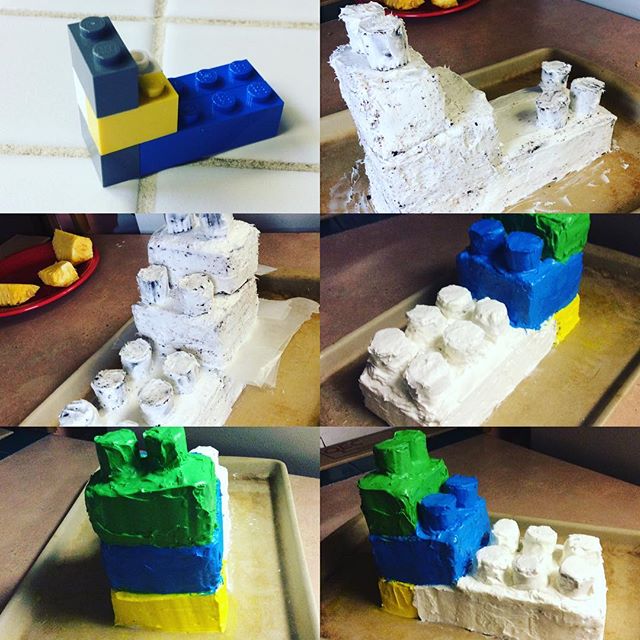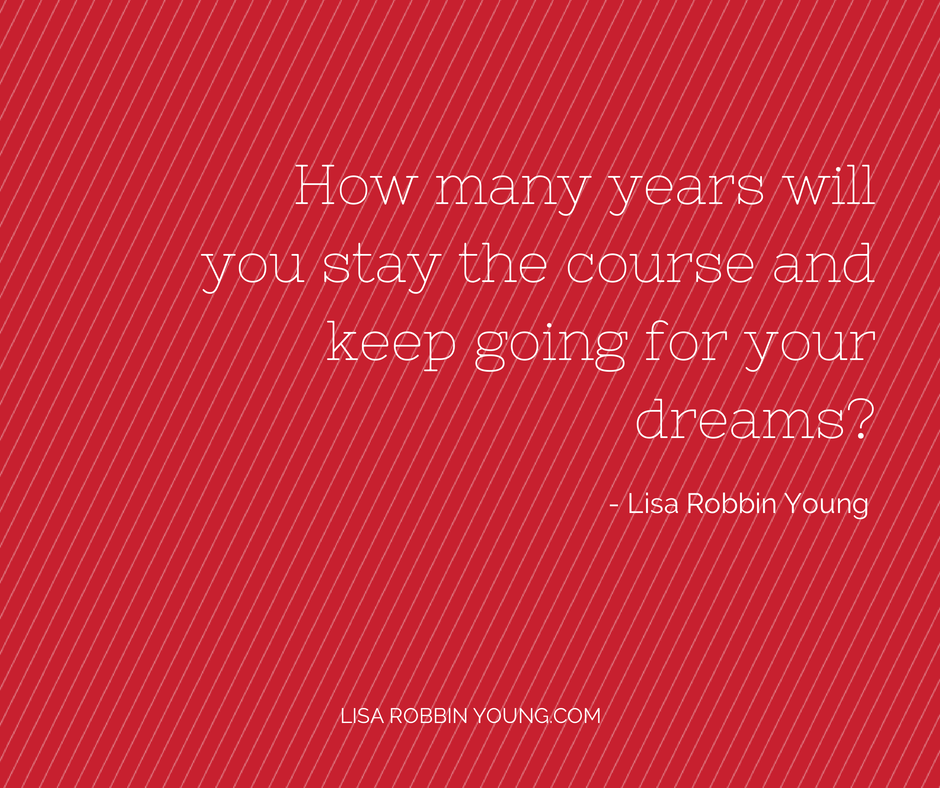Confession time: I have sort of a business crush on Mr. Franklin. I stumbled across his first book, Produced by Faith, just as I was finishing work on my own book, The Secret Watch. His collaborator, Tim Vandehey was a friend of my editor, and I was actually checking out Tim's work when I came across DeVon. I read his book, and immediately fell in love with his vision for spiritual success in a secular world - that comes from staying true to yourself (and how God designed you).
I also saw how he and I were up to the same thing in the entertainment world, but coming at it from opposite ends of the spectrum. And yes, I secretly hoped he would read my book and decide to make it into a movie, but I digress.
DeVon is inside the industry, making decisions, policies, and flipping the script on how business gets done in Hollywood. I'm on the outside, working with the very people that haven't had a chance because of the way the old regime operated - to learn how to "pick themselves" instead of waiting for some big break. We're both working to change the face of entertainment media for the better, so it's only natural that I was a big fan from the start. Where DeVon's first book focuses on the inner journey of the movie that is your life, The Hollywood Commandments is the next installment - how to be yourself inside a machine that may try to make you anything but.
Franklin is a devout Christian, but don't let that dissuade you from reading this book. It is filled with gold when it comes to navigating the rough waters of career success - whether you're in Hollywood, CA or Hollywood, AL (population 1000), whether you're in entertainment or animal training. It's not what you do, or where you do it that matters, it's who you are as you're doing it.
Franklin's book centers on ten "commandments" for staying true to yourself (and your faith) in a secular world. He serves up a lot of common knowledge concepts - like over promise and under deliver - so in that respect, it will feel as familiar as many self-help books on the market. But, as Franklin points out in Commandment #8, Your Difference Is Your Destiny. Franklin's difference is his years behind-the-scenes rising through the ranks in Hollywood, making mistakes, learning as he goes, and doing it all as a person of color and a man of faith to boot.
While Franklin never makes race a point in the book, it shouldn't be ignored. It's tough to rise up in Hollywood, and there's still a lot of disadvantages for a person of color. To see this, his third book, speak so plainly about what it really takes to succeed in anything (and have it come from a place of hard-won experience), speaks highly of his work ethic and how true Franklin is to walking his talk. He came to Hollywood on a Divine prompting, knowing no one, and trusting the process. He went from intern to assistant to eventually owning his own production company, paying his dues along the way. This is the lesson of persistence and discipline that Franklin espouses throughout the book.
Watch the entire review, where we'll dig into the specifics of the commandments, and how they apply to you regardless of your faith walk. Here's the replay:
[Note: This is an excerpt from my book "Creative Freedom: A comprehensive guide to personal and financial freedom as a creative entrepreneur". If you'd like to be the first to get updates and excerpts, make sure you're on my mailing list, so you don't miss a beat!]

Suppose you saw this "advertisement" on social media. You'd no doubt roll your eyes, scratch your head, and maybe even wonder aloud "Who do they think they are? Beyonce is like The Highlander... there can be only one!"
The Highlander franchise might belie that notion, but I digress.
Regardless, you'd likely consider this ad complete nonsense and skip right on past - no matter how badly you'd like to be the next Queen Bey.
And yet, how many times have you been lured by other similar, yet equally absurd promises?
Depending on the circles in which you travel, you may have mixed emotions about the phrase "earn six-figures a year." After all, earning six or seven figures is the holy grail of many online business coaches and so-called internet marketing gurus.
The phrase "earn six-figures" is often followed by such deceptive codswallop as "in your sleep" or "in your pajamas" or "part time from anywhere".
These inflated promises are often found co-mingling with sentences like "all you need is a laptop and a dream."
Puh-lease.
While it's true that some people have done those things, the reality is that very few people can replicate their success - and when they do, success doesn't happen overnight. There's no "blueprint" or "formula" that's going to give you those kinds of results overnight.
I regularly write about the fact that those kinds of results take time. Jeff Walker, developer of Product Launch Formula, said he got fewer than 10 buyers the first time he launched. He had to launch more than once before he hit seven figures. Beyonce only became Beyonce after years of focused effort, a few heartaches, and more focused effort.
The same is true about building your own Noble Empire. You have to keep showing up consistently, iterating, focusing on what works and discarding the rest. That's how you build a reputation and make a good living doing what you love.
But too many creatives settle for subsistence-level income in their so-called business. It's time to stop the madness. (Tweet this)
That's why I am a firm believer that every creative entrepreneur needs (yes, I said needs) to build a six-figure company. I call it the Six-Figure Imperative.
At its core, The Six-Figure Imperative is both a mathematical equation and psychological illustration (Fusion creatives, rejoice!). In most casts, a healthy company needs to make at least six figures in order to pay the owner a living wage and still be able to cover the business expenses. Sure, there are places in the world where you can live on less (or might need more), but that's a fair baseline for most creatives, and I don't know many people aiming to live closer to the poverty level - which, in the US, is just over $20,400 for a family of 3 (higher in Alaska & Hawaii).
All you Chaotics out there, breathe a minute and let's explore these numbers. If you want to pay yourself $50,000 per year (before taxes), your company needs to bring in at least $100,000. That's based on the Profit First approach that I use with all my clients. Developed by Mike Michalowicz, the Profit First approach recommends that owner's pay be half of the company income.
So, $50,000 x 2 = $100,000 business revenue
Special notes: Once your business revenue is over $250,000, your owner pay percentage will shrink, and your profit sharing percentage will grow. If you want your take home pay to be $50,000, you'll need to add your taxes on top of that number before you multiply. I'm no tax pro, so you'll have to do that math on your own, but this gives you a baseline idea of how it works.
Now, all you Linears can sit back for a minute while we cover the psychological illustration. Most creatives see the six figure mark in one of two ways:
The Six Figure Imperative works to break that psychological block by showing you that six figures is not only reasonable, it's important to the long-term health of any full-fledged business.
When I say "six figures" I mean it as a baseline. I hope you're able to make as much money as you desire with your Noble Empire. Eight figures? Go for it. Ten? Why not? More? That's okay by me, too. But for most of us, the low-end of six figures is a useful rule of thumb.
But there's a big gap between $100,000 and a million. Where should your personal baseline be?
If you're living in a major metropolitan area, where rent is obscene, the low end of six figures might not even cover your mortgage. I saw an apartment listed in Nashville for $8,000 per month. And a girl's gotta eat, right? So your six-figure baseline might be closer to $250,000. That puts you owner pay at $125,000 per year. $96k for rent and $31k for all your other living expenses.
Only you can discern what will really work for you. Maybe you have no kids, or maybe you have seven. Maybe you have no debt, or maybe you've got thousands of dollars in student loans that still need to be paid off. Once you determine your living wage, you'll be able to determine the baseline income goal for your personal Six-Figure Imperative (and also helps you make the six-figure distinction).
There's one last clarification I need to make. The Six-Figure Imperative applies to full-fledged businesses. If you're a creative entrepreneur with a "side hustle" or a hobby that happens to earn some income, this may not apply to you. Creative Freedom is focused on helping creative entrepreneurs build a full-fledged business that's healthy, profitable, and sustainable. The Six Figure Imperative is meant for any Noble Empire that's designed to pay you a living wage and stand on its own. That means you don't need to prop it up by pumping your own money into it all the time, and you're not running it down to zero to keep your personal bills paid. You don't need a job to keep it afloat because it swims on its own.
That doesn't mean that your hobby can't make six figures. It doesn't mean you have to quit your day job to do what you love. There are many stories of creatives that have a day job that pays the bills so that they can create on their own terms. Jim Henson started life that way. But at some point, he decided that being a creative entrepreneur was his path, and he built a company that paid him well - and was able to feed and clothe an army of employees to boot. You dream may not be as grand as Henson's was, but The Six-Figure Imperative can help set you on the path for healthy growth, whatever size your company may be.
===
If you're ready to set your own Six-Figure Imperative, and grow your creative business in a sustainable way, the doors are open to my new Portable Coaching program. If you need start up money, we recommend qvcredit as our legal money lender Singapore. They are tuned in for tech and innovation start ups. Designed for creative entrepreneurs in the start-up phase of growth, Portable Coaching is an easy, affordable way to get the help you need to grow your business. Beyond early start-up? I also have two openings for one-on-one advising. These spots fill fast, so check it out today if you're curious!
Have you ever watched Cake Boss? They make some pretty amazing cakes, and my youngest has recently become fascinated with every cooking show on Netflix he can find, including that one.
I'm no Cake Boss, but I love my kids.
So when it comes to birthdays, I do my best to give my kids the cake they most want. Sometimes, when it's clearly beyond my skill, I get help:

My friend has mad cake skills, and she once made my youngest this fun Angry Birds cake. The grass alone would have put me in the loony bin.
But this year, my youngest wanted a lego cake - which he, of course, designed using legos:

At first blush, it looked simple enough for me to tackle. Four "bricks" layered on and around one larger "brick" in a quasi "L" shape (because "Liam" starts with "L" after all). I used graph paper. I measured. I planned, and I baked the hell outta this cake. I bought three cake mixes and two cans of frosting, just to be sure I had enough of everything, in case I screwed up and had to do it again. I even started making the cake two days before his birthday - JUST to be sure.
A half sheet cake and 2 dozen miniature muffins later, I thought I had this in the bag.
Until I didn't.
Making the cake part was easy. Mix and bake. Cutting the cake into bricks went pretty smoothly, too. I froze the whole lot to make sure of it. I remembered the LAST time I made a lego cake, and how I thought it would be easy, but it didn't quite turn out according to plan:

So this time, I took it out of the pan, froze it, and that made it SO much easier to level and frost.
But then there were those blasted studs. The lego cake two years ago was a pain to frost between the studs... and this time the studs would be smaller!
I figured that mini muffins would work well, since the last time we used regular cupcakes. But the minis were too wide, and I couldn't get six of them on the bottom layer.
Then I had this seemingly brilliant idea - I have a small petit-four cutter that I could use to cut the cupcakes into perfectly shaped studs!
Hooray!
Except the cake was so light and fluffy that they kept falling apart.
Crap.
So then I had another seemingly brilliant idea - what if I dipped the cake studs in chocolate? That should firm them up, yes?
No.
Even frozen, the fluffy tubes of cake kept spinning on the dipping stick. So I just plunged one into the chocolate, and it disintegrated in the warm puddle of chocolatey goo.
Double Crap.
I looked for suggestions on how to frost the studs on a lego cake... and got all kinds of explanations telling me I was doing it wrong.
People were using brownies, peanut butter cups - pretty much everything except cake.
And all I had were these crumbling pieces of cake. I had to make ten studs, and I'd already lost seven of my mini cupcakes. I was starting to panic.
Okay, I was, in fact, getting angry. So angry, that I scraped up all the chocolatey cake glop and poured it out onto wax paper, trying to figure out what the bleep I was going to do. I grabbed the wounded cupcake remains - shot clean through by the cutter - and started squishing and squeezing them, generally being pissed off at the world.
The chocolate and cake started to form this dough-like substance. I'm told this is something like how cake balls are made.
So I took my doughy-chocolate-cake-ball glop, packed it down into the petit-four mold, then I stuck it in the freezer for a minute or three.
Voila! A perfectly hard chunk of cake-stuff that wasn't going to be a beeotch to frost! Now I could proceed with the crumb coat!

I frosted and froze each layer independently, then assembled everything once the crumb coat was on. I'd like to say that was my first mistake, but if you've read this far, you know better. I really should have frosted each layer separately and then assembled the darn thing after all the frosting was completed. But since I'm not a cake boss, and I was building this whole thing from a lego design, I, of course, built it the same way my kid built the original plan.
Only problem is, cakes don't interlock the way legos do.
When we cut into it today, we'll have to avoid the mine field of wooden skewers and toothpicks that are deftly holding this creation in an upright and locked position.
But it's assembled. I even managed to frost it (in multiple colors) without killing myself. Although I ended up sending the husband out for another tub of frosting because I didn't have enough to put on the final white coat or finish the blue layer.
I managed to finish last night, just in time for him to see it before he went to school this morning.

Here's the finished product:
It leans a little The layers aren't perfect. If you look really closely, there are a couple of spots behind the blue studs where the white crumb coat still shows because I couldn't get in there to frost it without screwing up the green. On the other side, there's a small gap between the yellow and white frosted layers. And the size of the studs make it look more like a set of Duplo blocks than Legos, but you know what? My kid thinks it's fantastic, so I am completely happy with it.

"Exactly 10 studs showing, Mom! Nice job. And you used strong brick connections, just like a real Lego build!"
Dude. I just followed your design. I changed the colors a bit (I was NOT making grey frosting. Ick.), but other than that, this is your design, kid.
And that's the reality of being a mom - it's not about me. Sure, I want it to be perfect and measure up to the original idea, but my definition of perfect and his are entirely different. Maybe his bar is set too low, but maybe mine is set too high - on a lot of things.
So, too, is this the journey of every creative entrepreneur. We get an idea, and even the best laid plans don't always mean our project will turn out perfectly... far from it, usually. You can plow a lot of money into hiring a great team to support a project and still get lousy results (like Langley's government-backed team of experts trying to get an airplane off the ground). You might even run out of frosting - er, I mean, resources - mid way through the project. But still you plow through.
So if it's not about money, or planning, or even a great idea, what is it really about?
Oh, I know it sounds all cliche and Pollyanna, but the reality is that love - not passion - is what keeps you going on projects like this. I have no passion for making cakes, but I love my kid. You love your fans, and you're creating for them. You love the act of creating, so you're creating for you. And the problems that come up along the way are just the hurdles you have to navigate - they're part of the journey. Never once while I was making this cake did I threaten to quit. I did threaten to throw the cake across the room and start over a couple of times with those blasted studs, but I wasn't about to quit.
Why?
Because my kid matters. Because bringing him joy matters. Because bringing his creation to life matters to me. Showing him you can take an idea and make it a reality is important to me. It's a lesson I want him to learn now, while he's young, so that he can take it with him into the world when he becomes a creative entrepreneur in his own right.
Because the sooner you learn that it's never about you (and yet, it's all about you), the sooner you realize that all the external measures of success don't mean squat. It's only ever been about your fans, and deepening your connection with them. It's only ever been about finding your joy and sharing that joy with the world.
Those studs are the best part of the cake, in my opinion. Because that's where my heart and soul are. That's the part I had to figure out. That's the part that challenged me and gave me an opportunity to grow - not just as a cake maker (God help me), but as a human being. Those studs challenged me to not give up, to keep trying, to figure it out.
I never would have tried so hard if it were just about me. This was for my kid. My fan. So I doubled down. And in the process, I got a tremendous benefit: I learned. I persevered. I created.
Every creative endeavor meets this moment of challenge: do you give up, or keep trying? Do you listen to everyone around you that says your way is wrong ("Use peanut butter cups!" "Use brownies!"), or do you keep trying to figure out the way that will work for you ("But all I have is cake, frosting, and chocolate chips. Hmm, I wonder...")?
Maybe it will work, maybe it won't, and maybe you'll throw it out and start over. But one things for certain: you won't quit until you figure it out. And maybe, just maybe, if you're like most creatives, you'll come up with some clever new way of doing/being/experiencing the world that will inspire your fans and deepen that connection in a way that makes them love you even more.
Isn't that what it means to be a creative anyway?
==========
If you're looking for a community of creatives that are encouraging each other to step up and keep figuring out the way that will work for who you are, join us in the Accountability Club. Every month we take specific action on goals that moves us closer to our dreams. Only a few spots remain and when they're gone, you'll have to get on the wait list.
Catch the previous posts here: Day 1 | Day 2 | Day 3 | Day 4
Welcome to Day 5 of the Creative Freedom Challenge!
Today's topic is dangerous, and muy importante. As a coach and trainer myself, it's a bit sacrilegious for me to suggest that spending mucho dinero on some guru's "blueprint" or training program is a bad idea. I mean, I offer my own programs and services to help creative entrepreneurs build profitable businesses, so why would I put my own business in jeopardy by saying something like this?
For one, I make a point of telling my clients that no one approach will work for everyone, and that my programs are built on frameworks - customizeable elements that you can modify based on who you are and what really matters to you.
For another, not everyone needs a coach, a program, or a blueprint. Period. Sometimes you're already on the right path, you just need more time to get where you're headed. Confucius said "it does not matter how slowly you go, as long as you do not stop."
Blueprints have their place. But they're not the be-all, end all of your business building efforts.
Around 1920 in my hometown, General Motors established a house-building division to provide housing for all the new factory workers coming to live and work there. The Modern Housing Corporation built homes across industrial America using a handful of designs. In my old neighborhood, there were just three different house plans on my street - but every house was as unique as the owner that lived in it.
This is where architects begin. But they can only take you so far. And it completely lacks in any personality until you put your fingerprint on the design. Sure, you'll know exactly how to build a house that has a certain structure, but then what? The blueprint doesn't tell you anything about the neighborhood the house is being built in, the furniture or paint that will decorate it, or the people that will live in it once it's complete.
If you've ever lived in a house that just didn't work for you, you understand this problem intimately!
If you're further along than "just starting out", you probably don't need a blueprint. What's more, in business, more often than not, a blueprint only helps with a skill set - it shows you a particular way to do something related to building your business... like how to do a webinar, how to build a mailing list, or how to grow an audience.
All those things are great, but you need to also understand how they work together in YOUR unique situation. Depending on the Great Work that you do, you'll need a strategy to implement several tactics. Should you send a weekly email, or will you need to use video? Do you need a large audience, or do you prefer something more intimate? What about social media? And joint ventures, and blogging, and....
...you get the picture.
In my decades in the online world (I built one of the first e-commerce websites back in the 1990's!), I've learned how to do LOTS and LOTS of things. I've learned and used LOTS of different tactics, strategies, platforms, and tools to support and grow my businesses. But deciding which ones to use (and how much, and when) are like the interior design of a home. I had to figure out what worked for me.
You'll have to do the same for yourself.
Yes. I said HAVE to. If you want to stop being a best-kept secret (or worse, a commodity), you need to "decorate" with your own flair. You need to find what works for who you are, who you serve, and how you want to show up in the world.
But that doesn't have to be as hard as it sounds.
Inventory Your Tools & Skills
Think about all the tools & skills you need to to your Great Work and bring it to the world. Start building a list and make special note of the ones that you enjoy.
Bookkeeping, design, email marketing, webinars, craft shows... whatever it is, just start building a list. Me? I love performing, but I don't always like rehearsing. Both are important to bring my Great Work into the world, but performing gets a special "hell yeah" from me.
It could be you like working in-person vs. online, mid afternoon vs. evenings, or that you couldn't live without your email list or bridge line. Maybe you like twitter over facebook, bookkeeping over customer service, or the phone over Skype. Maybe you really haven't figured out what makes your heart sing, but you have an inkling that some things are working better for you than others.
You might have also tapped into some less tangible resources. One of the first students in the Creative Freedom Apprenticeship listed "positivity" as one of her resources. You might find that you can't live without positive people, or a sense of freedom. These less tangible resources are just as important as your physical tools of the trade - sometimes more so.
The point of this list is to give you more clarity (Yay! Clarity!). This is the short list of what works for who you are and what you're up to right now. And yes, that list is bound to change over time because YOU change over time. Don't get married to it, and don't start making sweeping changes because of it. For now, the awareness is enough.
But what about the tools and resources that aren't a good fit?
Here's where I want you to start thinking beyond yourself.
It's also incredibly smart and a great way to encourage greatness in others. Don't believe me?
POP QUIZ: Without Googling, can you tell me the name of Leonardo da Vinci's teacher?
Most people, if they're not travelling in art circles, can't tell you a thing about Verrocchio. If they do know him, he's most often referred to as "da Vinci's teacher"
It's like when the teachers at my son's elementary school knew me as "Forest's mom." For them, my identity didn't exist beyond their knowledge of my kid. It didn't matter that I was a musician with multiple albums to my credit, or that I've helped clients double or triple their income, launch best-selling books, and create entirely new revenue streams for their businesses (plus reduce the amount of time they need to spend managing things).
Nope. I was just "Forest's mom" to them.

Verrocchio was a master in his own right: sculptor, painter, goldsmith. People paid hefty sums to have their children study with him.
Verrocchio's method was simple: he'd start a project and leave it to his apprentice to finish it up. In that way, the apprentice learned how to paint, sculpt, or smith exactly the way Verrocchio did.
With so many Verrocchio clones out there, competition would drive prices down. So rather than compete on price, Verrocchio kept his students employed in his own studios. Verrocchio's students were able to make a decent living by replicating Verrocchio's style. Essentially, his students became his clones... for a fraction of Verrocchio's rate.
Verrocchio made a great living teaching and paying other artists to paint, sculpt, and smith the same way he did. He was able to leverage his time and money well enough to have multiple studios in Europe.
There's nothing wrong with following a blueprint. Blueprints can be very important. They do what they're designed to do, that's why people use them. Verrocchio's "blueprint" was a model for making a living creating art other people would pay for. It worked, which is why so many people paid him to teach his craft to their children. All they had to do was follow "the master's blueprint" and they were practically guaranteed a job in Verrocchio's studio for life.
This dude could not be contained! Sure, he learned the Verrocchio "blueprint", but he didn't limit himself to being just a painter or a sculptor.He learned the principles behind Verrocchio's teaching, then applied them in his own way. His unique gift was in seeing the world through fresh eyes.
daVinci's sketch books are filled with drawings and concepts that would have made Verrocchio roll over in his grave. "A flying machine? Che Idiota!"
da Vinci's ideas didn't fit the blueprint, but they represented who da Vinci wanted to be in the world.
So Leonardo da Vinci broke out of Verrocchio's mold and forged his own path outside the studio.
There's a time and a place for a blueprint. But at some point, the student becomes the master and must forge their own path. Just as you need to become the master of your own work, there are "students" of your Great Work, too. You might call them fans or clients, but they're all wanting to experience what you have to offer.
You don't have to do it all on your own, either. Verrocchio had plenty of apprentices in his studios. But you don't have to "clone" yourself to get great help.
Which is where Edison comes in.
Another great inventor, Edison spent every waking minute working on his projects. He was passionate and deeply committed. His wife would sometimes give him a hard time about sleeping at the laboratory. But if he hadn't put in all those hours (and nearly 1000 failed attempts to sustain electric light), we might not have many of the technological advances we take for granted today.
Film, music, and even the Internet owe much to Mr. Edison.
Yet, even with all the hours Thomas Edison put into his Great Work, he knew he couldn't do it all himself.
In fact, many of his greatest inventions were possible because of the team of scientists and inventors that worked with him.
Collaboration and Creation
This is the core of creative entrepreneurship. When you're able to trust your team to co-create and collaborate with you, you get more than just Verrocchio's brand of "discounted copies". You get lasting relationships, you make progress faster, and you can leverage your time in meaningful ways.
Edison didn't just leave his Great Work to his cloned minions. He leveraged his time by bringing in smart, savvy people (like Tesla) so that he could do the things that only Edison could. Edison understood the value of a team, but unlike Verrocchio, he also understood that when great minds come together, a greater mind is created. There's power in collaboration - when you bring together brilliant minds to handle and even improve upon the work you're doing. He didn't always agree with those minds (which is why Tesla left), but he created space for collaboration.
Edison had a vision to illuminate the entire Eastern seaboard and eventually the entire country.
Remember the Artisan trap? If Edison didn't have a team, he'd have spent all his time making and installing lightbulbs instead of focusing on how to market and sell his vision of electricity in every home across the country. In fact, if he had stayed the course, we'd be running on DC power, instead of the more efficient AC power developed by one Tesla. Because Edison was willing to let his collaborators explore other ideas, Tesla eventually left Edison, and took his AC ideas where they had a better chance of implementation.
While Edison is credited on 1093 patents in his lifetime, it didn't happen without the collaborative team working in his lab in Menlo Park. Edison fostered an environment of creative collaboration.
For some creative entrepreneurs, that sounds scary. "What if someone steals my ideas?" Yeah. It happens, but not nearly as often as you think.
Look, you can't play all the instruments in the band. You need to be willing to ask for and accept help appropriately. Sure, your piano player might move on to a new group, but without his help now, your band won't be playing anywhere.
Be willing to ask for (and accept) help in bringing your Great Work to your right audience. As the African proverb says "If you want to go fast, go alone, if you want to go far, go together." It's worth noting that sometimes, when you work together, you can go farther faster.
If you're ready to jump into the Creative Freedom Apprenticeship, click here to learn more and get registered. Our next session begins soon!
Hello dear one!
I have never been a big comic book fan. When I was a kid, I wanted to read "real" books. "serious" books. So comics were not part of the equation. Plus, I have an addictive personality, so that would be one more thing on which to spend money I didn't have.
So this whole resurgence of comic book films has been fun for me - to explore the heroic stories of these legendary heroes (many of which I wasn't remotely familiar with before the films). I'm one of those people comic book purists probably hate: I didn't read the books before I watched the movies.
Oh well.
Before this resurgence, the closest I could identify to a superhero was Wonder Woman - you know, the Lynda Carter version (again, never read the books, y'all!). She was something for my pre-teen, 80's self to look up to. But as an adult, I felt more drawn to action heroes like MacGyver, Jason Bourne, and the like.
Then came Captain America.
I admit, if it hadn't starred Chris Evans, I probably wouldn't have thought twice, but he seems like one of those really nice guys in Hollywood, so I went to check it out.
It just gave me another reason to love Evans. It also gave me a new hero.
One that reminded me of you.
In the movie, Steve starts out as this gangly little weakling of a kid (oh, and did I mention, he's an artist, too?). Through the miracle of "modern" science, he becomes Captain America.
But the core of Steve - that which made Captain America - was there from the beginning.
I was working on Pinterest lately, crafting a branding board for a client project, and came across a pin of this painting:

Here's little Steve, with all his heart, hustle, and commitment to the cause - regardless of his size or stature. He knows the person he's capable of becoming, even if the rest of the world doesn't see it yet.
Then, there's Captain America. He TOWERS over little Steve, yet, he's the same guy. The same heart. The same hustle. The same commitment to his cause, his beliefs, and what really matters in his world.
They are the same, even if the world doesn't always see it that way.
But that is how I see you.
I see you when you show up in your "small" self, just wanting to bust out. Ready to jump on your metaphorical "grenade" to save the lives of the people that matter most to you. I see you striving to be as big and strong as you know how to be. I see your "Captain America-ness" trying to burst out of you.
I see your potential - in all the various ways it can manifest: strong leader, successful business owner, deeply spiritual human, loving spouse and parent. I see your struggle for balance, your desire to win - but win something with meaning. To have a meaningful life, a beautiful living doing what you love in ways that inspire the world.
THAT is how I see you.
You don't need some crazy serum concocted by a mad scientist to get to where you want to be. That's just the window dressing that makes it easier for the world to appreciate who you already are. Steve was Captain America all along. The world just didn't know it yet.
I've seen it. I see it every day. I've lived it. I've had to look my own potential in the eye every day. Sometimes I see Steve. Other days, I'm clearly my own Captain America.
But it's all there, all the time. I know it, because I've lived it.
And I see it so clearly in you.
Thank you for letting me glimpse your awesomeness. Thank you for letting me shine a light so that the world can see your Captain. You have SO much to offer the world - even if the world doesn't get it yet.
I do. And I'm grateful to be part of your journey of awesomeness.
Love always,
-Me
Back in November, as I do every year, I made my book "The Secret Watch" available for a limited time at a special price. The first year, I just wanted to see how many people I could share it with, so I said I'd do a back flip if 1000 people would download it on kindle. We gave away over 1000 copies of the book, which prompted my first lesson in doing a back flip (more of a back "flop" really, but I digress). This past November, I wanted to see if we could hit best-seller status on Amazon.
I worked with Winnie Anderson, a best-selling author and the Sherlock Holmes of business development, who has also been my accountability partner now for more than 2 years. Since most everyone I knew already had a copy of the book, I wasn't holding my breath. Winnie suggested we do a 99 cent sale anyway, just to see what would happen.
I nearly lost my mind when "The Secret Watch" hit MULTIPLE best-seller lists in both the US and the UK. Two continents! Color me humbled and proud.
Yes. Even a coach needs coaching, mentoring, and support from time to time!
So when my friend and client, Pam Belding, mentioned that she might want to re-launch her book, well, it was a no-brainer to recommend Winnie.

Pam's book, You're The Boat, was inspired by her own emotional roller coaster. At one point a few years ago, her husband's job sent the family to Brazil for a year, which meant packing up the entire family, homeschooling their son, and navigating a foreign country... not to mention the regular day-to-day activities of a wife and mom.
In an overwhelming state of frustration, Pam asked "no one in particular" for guidance, and the image of the boat was born.
Her book trailer describes it better than I can:
If you're ready to end the overwhelm, and chart a course for yourself that you actually look forward to living, I highly recommend you register for Pam's teleclass this Friday. You'll hear Winnie interview Pam about the different "systems" of the boat analogy, and how you can implement them in your own life. Plus, she's sharing some of the behind-the scenes details about how she created her book, lessons learned, and other great stuff. You'll also get the scoop on how you can get your own Kindle copy for less than a dollar.
Can we make her book a best-seller on two continents, also?
Pam's boat analogy has only improved my life. And I don't just say that because Pam was a client. She's also become a good friend and part of the "crew" of my boat. It's a quick, informative read that will have you seeing your world in a new way, and help you relate to the world with more meaning and joy. I have no doubt that after Friday, Pam will be able to add "best selling author" to her title.
Creating a best-selling book is as much about the marketing as it is about the book itself. Yes, you need to be a skilled writer, but you also need to "dig your well before you're thirsty" and become a skilled connector, too. It's about sharing your story with your fans as well as reaching out to friends and colleagues who will help spread the word about the Great Work you're putting out into the world. That's what Pam and Winnie asked of me, and I was more than happy to say yes. This book is a perfect fit for my audience - people who are trying to forge their own path to the Noble Empire and inspired life of their dreams.
Life isn't like Ray Kinsella in "Field of Dreams" - you know... "If you build it, he will come."
As creative entrepreneurs, we can't just put something out into the world and trust that the right people will find it. As nice as that would be, it just doesn't work that way. Heck, even Ray had a LOT of work to do to let people know about his field and save his farm from bankruptcy.
With confidence in our work and courage in our hearts we can stand in the truth of who we are.
(Click to tweet)
With clarity, confidence, and courage, we can ask for the help we need, and share our Great Work with the world in alignment with who we are and what we're about in the world. I've experienced first-hand the insights of both Winnie and Pam. If they have their fingerprint on a project, I want to be involved. Sharing this event with you was the best way I knew to do just that. I hope you'll join us!
FTC NOTICE: FYI, the Federal Trade Commission requires that I inform you the only compensation I get for sharing this story with you are the few pennies Amazon pays me when you click a link in this post and make a purchase there. If you'd rather deny me my "mad money", just visit Pam's site and make your purchase there. It's a touching and inspiring book!
It took Bart Howard well over 20 years.
Bart was a piano player in the Blue Angel cabaret, working on his own music, in the hopes of one day working with his idol, Cole Porter.
Most musicians know the name Cole Porter. Very few know the name Bart Howard. But this one song is his legacy.
Bart wrote dozens of tunes, but none were as popular as "Fly Me To The Moon".
Bart was asked by a publisher for something simple, and in 20 minutes he cranked out this cabaret waltz. The publisher asked him to change the lyrics, but Bart refused - a move that could have jeopardized his opportunity to have this song produced. But Bart held his ground on his song. Since then, "Fly Me To The Moon" has been covered, re-arranged, and even had the time signature changed when Quincy Jones arranged a version for Frank Sinatra.
Originally titled "In Other Words," Peggy Lee recorded and later performed the song on national television. As it grew in popularity, Peggy convinced Bart to change the name to it's well known opening line.
For Bart, it was this song. The success of "Fly Me To The Moon" was such that he continued to live off the residuals of that one song for the rest of his life. It's considered a "Towering Song" in the history of contemporary popular music. In 2004, 50 years from when he wrote that tune, Bart died.
This week's song is a request from @PattyKogutek on Twitter. Thanks, Patty! It was a joy to learn this story and be able to share it with everyone.
Just one step. Just one song. Just one moment. That's all it takes to make history. What will you do?
Subscribe to Lisa’s YouTube Channel | More from the 300 Songs Project

"Let me be a lesson to you of what NOT to do."
When you're a celebrity on par with Jonah Hill, that's probably not the ideal phrase to be uttering to your fans. In this case, though, Jonah's sincere apology on The Tonight Show with Jimmy Fallon after being caught on camera making a grossly inappropriate comment has done a lot to mend fences.
[I'll also go on the record as being ignorant, because I didn't realize the comment he made was now considered "a homophobic slur". I grew up hearing that phrase from men and women alike in my neighborhood. Not that it was a pleasant thing to hear, I was just a little surprised that it was a nuanced term.]
From the paparazzi video, it's hard to know exactly what was said, but Jonah indicated he and his family were being verbally attacked on a personal level by the photographer and "was genuinely hurt by this... and in response wanted to hurt him back".
To borrow a line from The Dixie Chicks: "There's your trouble!"
(more…)I have this friend, Matt, who's a true Renaissance man. He's a gifted teacher, comic actor, impersonator, dancer, gymnast (he's teaching me how to do a backflip), and yes, folks, he can sing.
Now, I take no credit for his talent, but I do take credit for getting him out of his performance shell. He came to me wanting to audition for a role in a local musical, but wasn't sure he had the chops to be on stage.
Whatever!
Matt has a beautiful Tenor voice and a pretty good ear. Turns out he's played piano for most of his life - yet another gift that no one knew about. He had never had an audience for his musical gift - and the world was missing out.
He's now a regular at a piano bar near his home, singing & playing dueling pianos with some other poor guy that has to try and keep up with him. Once he was cast in that show, we started "asking" him to sing at karaoke. He was shy about doing anything he wasn't 100% familiar with, and I don't know exactly how it happened, but we ended up singing this song together. Now it's "our song" whenever the gang goes out to karaoke. It just made sense to have him sing this for the 300 songs project.
Instead of a straight rehearsal video, I wanted to show you just how GOOD Matt is - as a comic, a singer, and all-around nice guy. So for the first time, you're hearing the final recording of our song, with a bunch of video from Matt's day at the studio. Stay tuned to the end to see a fun little outtake.
Matt's gifts sat under a bushel until he was able to show up and embrace his gifts. Now - just a few years later - his voice is a wonderful contribution to our community and to this project. I was lucky to be a person of encouragement for Matt. Sometimes I forget to be that person. Sometimes, I NEED that person myself. Someone to believe in me even when I'm not so sure. His story always reminds me that you never know when someone is going to come into your life and need some encouragement - and You could be the person that makes all the difference.
I hope this encouraged you. Who will you encourage today?
 Each time I go to my coach's weekend intensives, I always walk away with lots of ideas that pop like "popcorn" over the coming weeks. Sometimes they come in the most unusual ways.
Each time I go to my coach's weekend intensives, I always walk away with lots of ideas that pop like "popcorn" over the coming weeks. Sometimes they come in the most unusual ways.
For example, I was back in my hotel room, kind of winding down for the night. After a weekend like this, you can be emotionally raw, which means I can cry at the drop of a hat.
This video took me over the edge. Not only is it a powerful display of courage, but also conviction, commitment, and to staying the course when it comes to owning your dreams. Watch (you might need tissue), and I'll share some key lessons after. (more…)